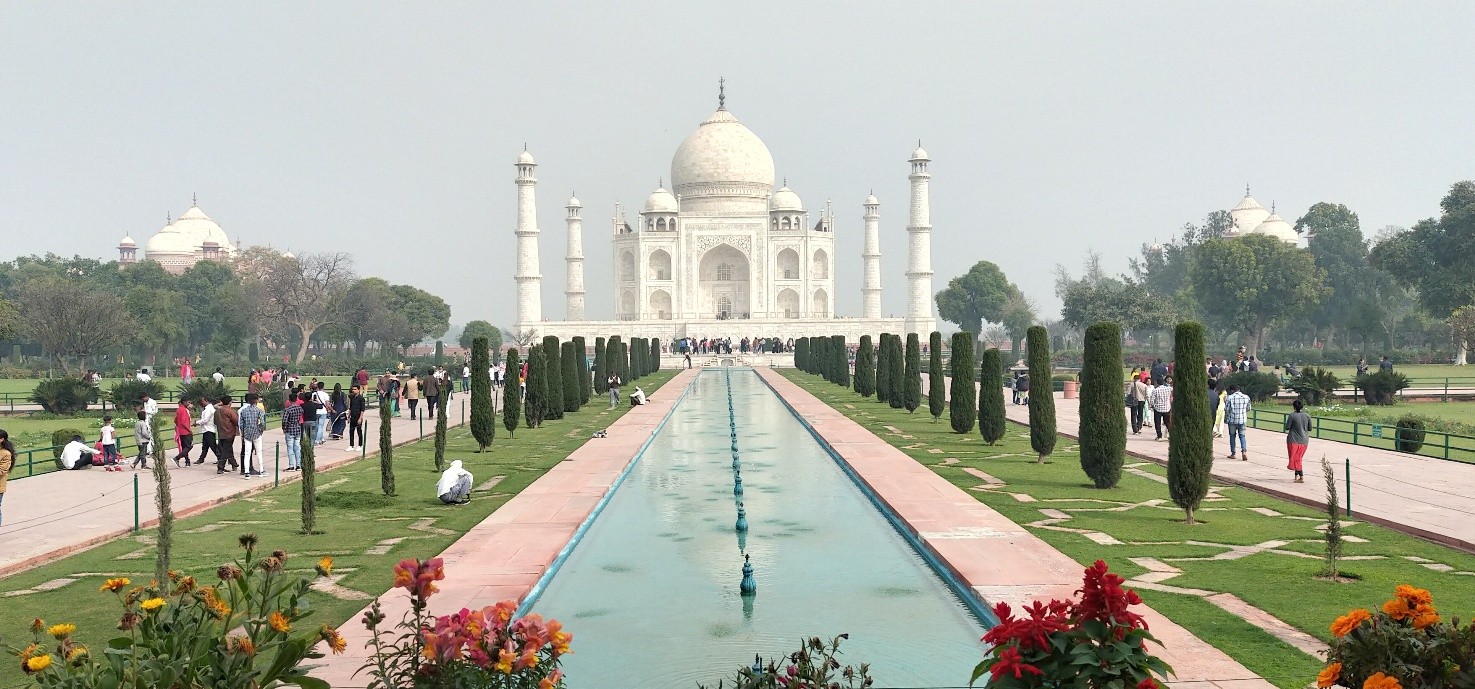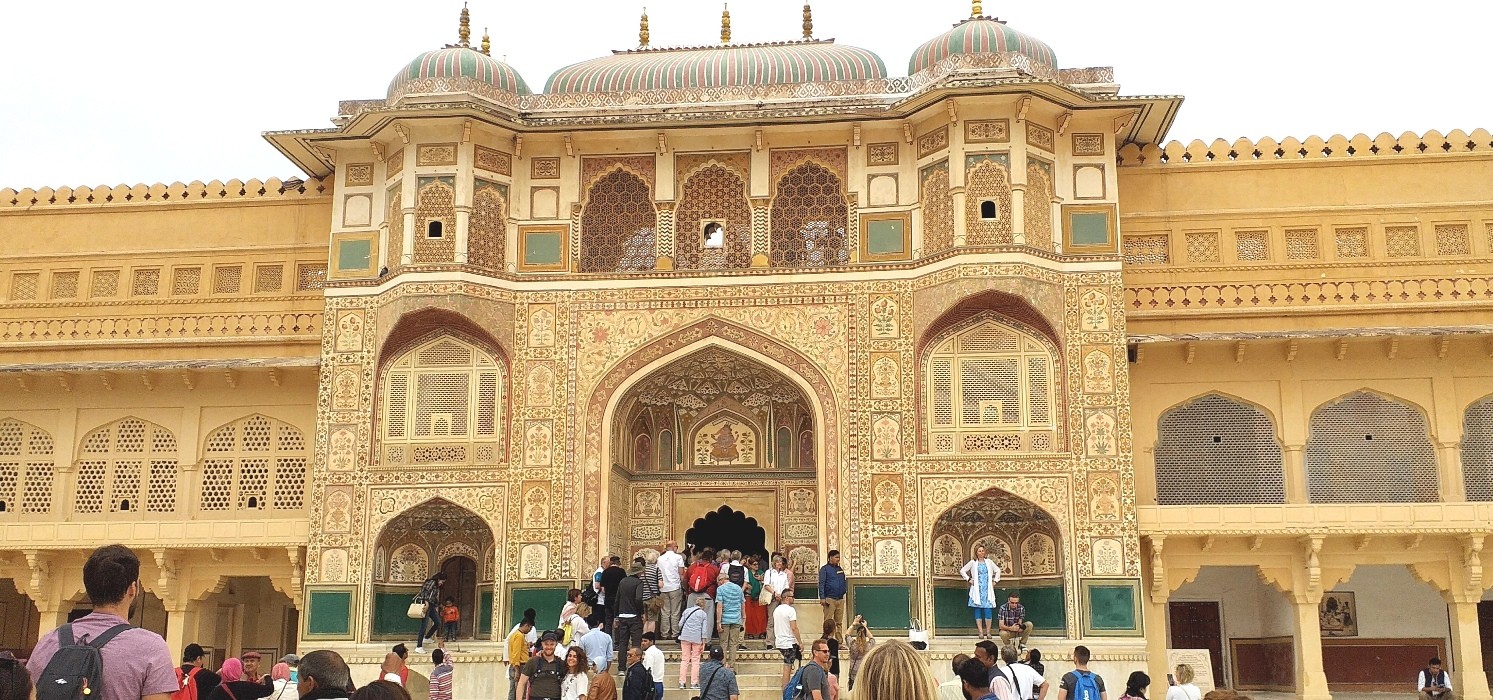
India’s famed Golden Triangle tour encapsulates the richness of its culture, history, and architecture in just a few days, making it a perfect choice for travelers looking to experience the country’s essence. Covering the three iconic cities of Delhi, Agra, and Jaipur, this journey is a deep dive into India’s royal past and vibrant present. Join me as I walk you through my unforgettable 5-day adventure.
Day 1: Arrival in Delhi – Where Old Meets New
I arrived in Delhi with a sense of excitement, knowing that the capital city offers an intriguing blend of ancient monuments and modern life. As I explored the bustling streets, I felt the pulse of this dynamic city—a mixture of the old and the new.
Morning: I started my day with a visit to the Red Fort, an imposing structure that narrates the grandeur of the Mughal era. The sprawling fortress, with its red sandstone walls, towers over the chaotic streets of Old Delhi. Just nearby is Jama Masjid, one of the largest mosques in India, which offered a serene contrast to the busy lanes outside.
Afternoon: My next stop was Raj Ghat, the simple yet powerful memorial dedicated to Mahatma Gandhi, followed by a drive past the impressive India Gate and the President's House. The afternoon sun gleamed on the wide, tree-lined avenues of New Delhi, which felt a world away from the packed streets of Old Delhi.
Evening: As evening fell, I took a stroll through the vibrant Connaught Place, enjoying some local street food and soaking in the lively atmosphere. Delhi is a city of contrasts, and this first day had given me a glimpse of its multifaceted charm.
Day 2: Delhi to Agra – The Majestic Taj Mahal
The next morning, I embarked on a 4-hour drive to Agra, home to one of the world’s most iconic monuments, the Taj Mahal. The journey was smooth, and the excitement of seeing the Taj in person grew with each passing mile.
Afternoon: Nothing quite prepares you for the first sight of the Taj Mahal. The white marble structure, with its perfect symmetry, stands as a testament to love, commissioned by Emperor Shah Jahan in memory of his beloved wife Mumtaz Mahal. I spent hours admiring its beauty, watching as the sun shifted and changed the color of the stone from a soft white to a golden hue.
Evening: I visited the Agra Fort, a UNESCO World Heritage site, which offers a fascinating glimpse into the life of the Mughal emperors. The fort’s sprawling courtyards and intricate palaces are impressive, and the view of the Taj from the fort was a beautiful bonus. As the day ended, I couldn’t help but marvel at the opulence of India’s Mughal history.

Day 3: Agra to Jaipur via Fatehpur Sikri – A Step Back in Time
On day three, I left Agra and made my way to Jaipur, with a stop at Fatehpur Sikri, a magnificent ghost city built by Emperor Akbar in the 16th century. The city, once the Mughal capital, is now deserted, but its grandeur remains intact. Walking through the beautifully preserved palaces and courtyards, I could almost hear the whispers of a bygone era.
Late Afternoon: Upon arriving in Jaipur, also known as the Pink City, I was greeted by the sight of its rose-hued buildings and bustling bazaars. Jaipur, the capital of Rajasthan, has a distinct charm, with its royal heritage still alive in its forts, palaces, and culture.
Day 4: Jaipur – The Pink City’s Royal Heritage
Jaipur is a city that exudes royalty, and I was eager to explore its regal landmarks.
Morning: I started my day with a visit to the Amber Fort, located on a hilltop just outside the city. The fort’s grandeur is undeniable, with its blend of Mughal and Rajput architecture. A jeep ride took me to the top, where I was rewarded with sweeping views of the surrounding hills and the Maota Lake below.
Afternoon: Back in Jaipur, I visited the City Palace, a royal residence that still houses the descendants of the former rulers. The palace’s museum is filled with artifacts from Jaipur’s royal past, and I marveled at the intricate craftsmanship of the textiles, weapons, and artworks on display.
Just a short walk away is the Hawa Mahal (Palace of Winds), a stunning five-story structure with hundreds of small windows that were once used by royal women to observe street life without being seen.
Evening: I ended my day with some shopping at the vibrant local markets. Jaipur is famous for its jewelry, textiles, and handicrafts, and I couldn’t resist picking up some souvenirs to take home.
Day 5: Return to Delhi – Farewell to an Incredible Journey
On the final day of my Golden Triangle tour, I drove back to Delhi, reflecting on the incredible experiences of the past few days. This journey had been a whirlwind of history, culture, and beauty, each city offering something unique.
The Golden Triangle tour is a perfect introduction to India’s rich heritage. Whether it’s the bustling streets of Delhi, the timeless romance of the Taj Mahal, or the regal splendor of Jaipur, this journey had left me in awe of India’s cultural diversity and historical grandeur.
As I boarded my flight back home, I knew this trip would stay with me forever—a vibrant memory of India's incredible tapestry of stories and experiences.



